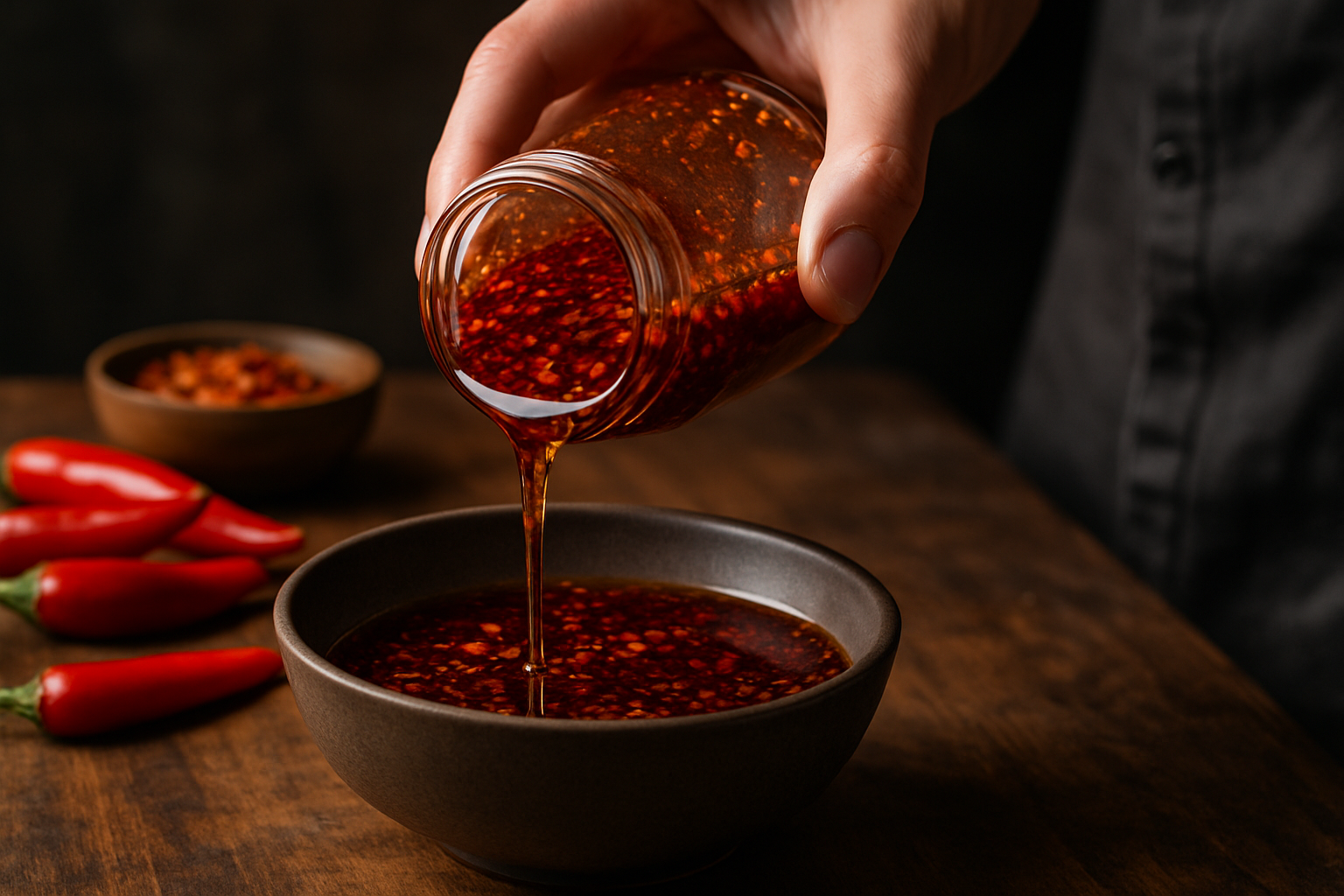Chili Oil Revolution: Spicing Up Global Cuisine
Fiery, fragrant, and utterly irresistible, chili oil is taking the culinary world by storm. This versatile condiment, once a staple in Asian kitchens, has now become a global sensation, adding depth and heat to dishes across cultures. From street food to fine dining, chili oil is transforming taste buds and challenging chefs to create innovative flavor combinations.

Beyond the Bottle: Artisanal Chili Oil Boom
The recent surge in chili oil’s popularity has sparked a wave of artisanal producers, each offering their unique take on this fiery elixir. Small-batch makers are experimenting with diverse chili varieties, from smoky chipotles to fruity habaneros, creating complex flavor profiles that go far beyond simple heat. Infusions with herbs, spices, and even fruits are pushing the boundaries of what chili oil can be. This artisanal movement has elevated chili oil from a basic condiment to a gourmet ingredient, worthy of attention from food enthusiasts and professional chefs alike.
Culinary Versatility: From Dip to Drizzle
One of the key factors driving chili oil’s widespread adoption is its incredible versatility in the kitchen. As a finishing oil, it adds a punch of flavor and heat to everything from pizza to poached eggs. In marinades, it infuses meats and vegetables with a spicy depth that transforms ordinary dishes into flavor-packed delights. Chili oil has also become a favorite among mixologists, who use it to add a spicy kick to cocktails, creating bold new flavor combinations. Its ability to elevate both savory and sweet dishes makes it an indispensable tool in any modern kitchen.
Health Benefits: More Than Just Heat
Beyond its culinary applications, chili oil boasts an impressive array of health benefits. The capsaicin in chili peppers, responsible for their heat, has been shown to boost metabolism, reduce inflammation, and even provide pain relief. When combined with heart-healthy oils like olive or avocado, chili oil becomes a nutritional powerhouse. Some studies suggest that regular consumption of spicy foods may contribute to longevity, making chili oil not just a delicious addition to meals, but a potential ally in maintaining overall health.
Global Fusion: Chili Oil in International Cuisines
As chili oil gains popularity worldwide, chefs are incorporating it into cuisines far removed from its Asian origins. In Italy, it’s drizzled over wood-fired pizzas, adding a spicy counterpoint to creamy mozzarella. Mexican chefs are using it to add depth to traditional salsas and moles. Even dessert menus are getting a spicy makeover, with chili oil finding its way into chocolate truffles and fruit sorbets. This global fusion is creating exciting new flavor combinations and challenging traditional culinary boundaries, showcasing the condiment’s remarkable adaptability.
Spicy Tips & Flavor Facts
• Store chili oil in a cool, dark place to preserve its flavor and potency.
• Start with a small amount and gradually increase to find your ideal heat level.
• Homemade chili oil can be customized with aromatics like garlic, ginger, or star anise.
• Chili oil can be used as a natural pest deterrent in gardens.
• The Scoville scale measures the heat of chili peppers, with some varieties reaching over 2 million units.
• Contrary to popular belief, the seeds are not the spiciest part of a chili pepper – it’s the white pith.
Conclusion
The chili oil revolution is more than just a passing trend; it’s a testament to the global nature of modern cuisine. As this fiery condiment continues to evolve and inspire, it opens up new possibilities for flavor exploration and culinary creativity. Whether you’re a heat seeker or a cautious taster, there’s a chili oil out there waiting to transform your meals. Embrace the burn, and let chili oil spice up your culinary adventures.





